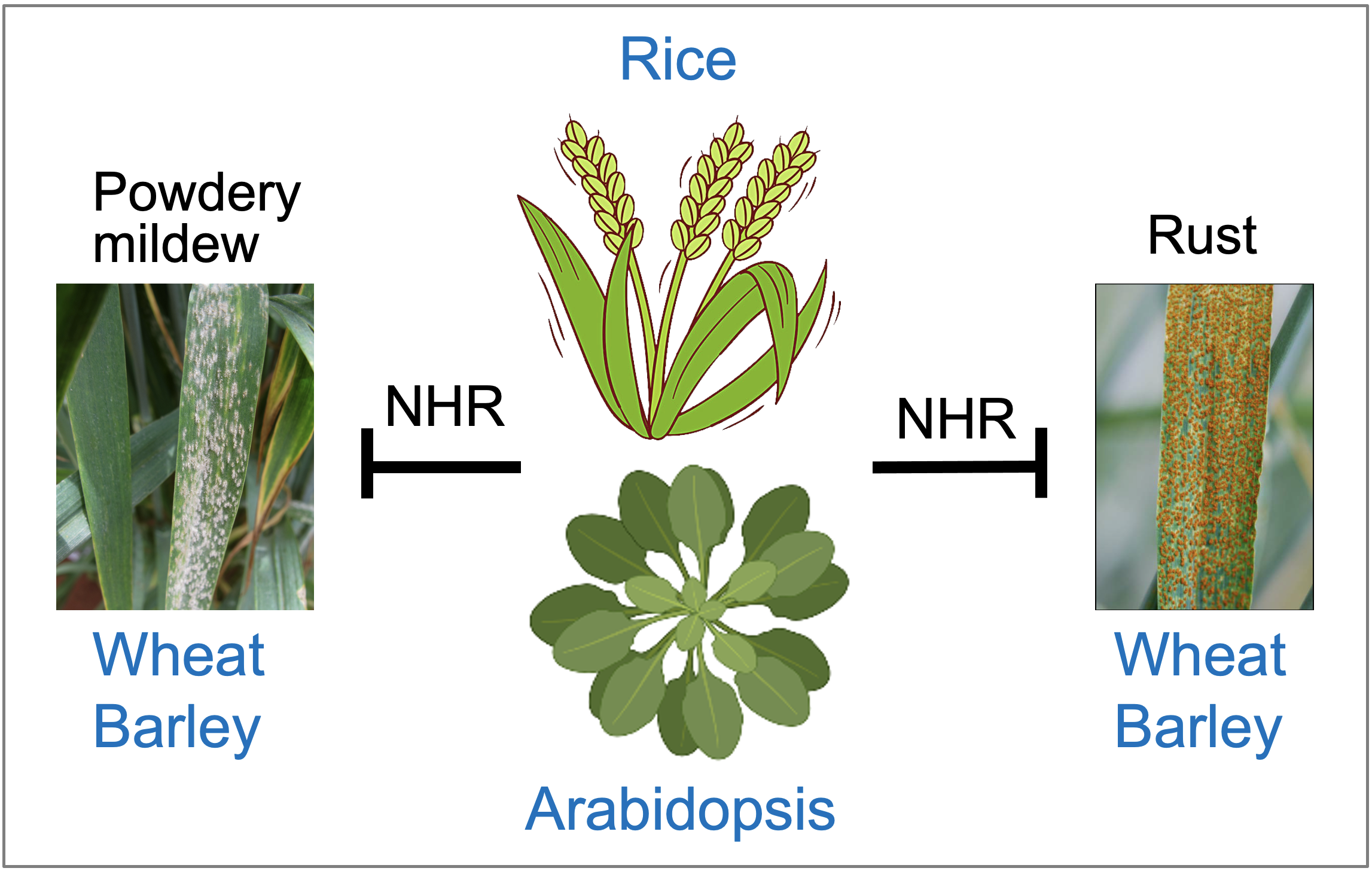Collaborative Research Leads to $2.7M from the National Science Foundation to Elucidate Non-Host Resistance (NHR) Mechanisms for Improving Crop Resistance Against Aggressive Pathogens

Globally, ~15% of crop losses are caused by various aggressive pathogens especially fungi, highlighting the importance of crop protection against pathogens. In nature, most plants are resistant to most potential pathogens because of a phenomenon, namely nonhost resistance (NHR). A prime example of NHR is rice’s complete immunity to rust and powdery mildew fungi that cause serious damages to many other cereal crops including wheat and barley. Hence, NHR provides a major safety barrier for all plants. Unfortunately, due to its genetic complexity the molecular basis of NHR in most cases remains elusive, which severely limits the exploitation of the immunity mechanisms underlying NHR for improving crop resistance against aggressive pathogens.
To address this challenge, Dr. Shunyuan Xiao IBBR Fellow, Professor in the Department of Plant Sciences and Landscape Architecture at University of Maryland, College Park, is leading a multi-institutional collaborative research team that has been awarded $2.7M from the National Science Foundation for their project entitled, “Research-PGR: Genome-wide quest for non-host resistance mechanisms in plants.” that includes Co-Principal Investigators, Dr. Bing Yang, Professor, University of Missouri; Dr. Yiping Qi, Associate Professor, University of Maryland, College Park; and Dr. Hemayet Ullah, Associate Professor, Howard University. This four-year award will aim to elucidate NHR mechanisms for improving crop resistance against aggressive pathogens.
The project team aims to dissect genetic and molecular mechanisms of NHR against potential fungal pathogens in two model plants using innovative and combinatorial forward and reverse genetics approaches. Identification and functional characterization of plant immunity genes required for NHR will not only reveal the molecular basis of NHR (which is among the top 10 unanswered questions concerning plant-microbe interactions) but also inspire novel strategies to engineer broader and more robust resistance in crop plants against various pathogens. This project will also generate valuable research materials and tools for the scientific community to study plant immunity mechanisms. Finally, this project will integrate research with education and outreach activities. For example, four annual “CRISPR Technology and Application” summer workshops will be run by the project team to enhance participation of under-represented minority undergraduate students in plant science. “I feel very excited about this new project because genetic dissection of NHR is a dream of plant pathologists for generations and the new knowledge from this project should help us understand and exploit plant innate immunity in general,” said Xiao.
